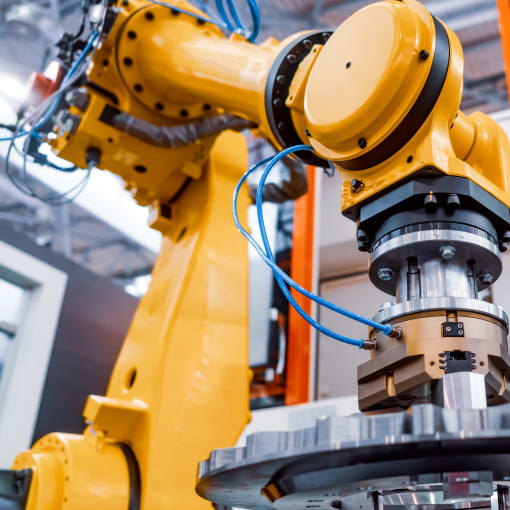Building a culture that embraces new technology
Learn how leaders need to anticipate and address change, empower their employees and build a culture that embraces new technology.
Learn how leaders need to anticipate and address change, empower their employees and build a culture that embraces new technology.

When implementing new technology or going through a digital transformation initiative, there will be employees at every level of the organization who just won’t get on board. Resistance to change is human nature, and it’s inevitable in a company setting – no matter how user-friendly the technology or how smoothly it’s deployed.
There isn’t much room for failure when investing in an expensive technology project. The good news is that there are ways to get it right on the first try. Building engagement and fostering a change mindset in company culture should be the first step in introducing new tools and processes.
According to a 2020 Forrester report on employee experience (EX), workers who scored in the top 20 percent in Forrester's EX index — a metric used to assess employee engagement — were likely to be satisfied with their technology environment. By contrast, workers in the lowest 50 percent of the index were most dissatisfied with their technology.
Keeping employees engaged and connected to company mission and vision is getting harder, with exceedingly remote and disparate workforces, rapidly changing business conditions and executives’ attention focused elsewhere. But productivity doesn’t happen in a vacuum – engagement is just as important as the right technology to survive and thrive through uncertainty.
Before addressing technology adoption and the change process, executives first must understand the changes they are asking their workforce to make. They must also understand that employees at different levels of seniority and responsibility respond best to tailored approaches.
First and foremost, address the initiative with key business leaders and department heads, mapping out where each one stands in terms of accepting the technology change. To truly get honest feedback in these discussions depends on a culture in which candor is encouraged, not punished. Then develop approaches for bringing any hesitant leaders on board using detailed talking points specific to their concerns.
This level of leadership must be equipped to communicate clearly and consistently to managers. But before this can happen, they must be engaged in an advisory role. Without their buy-in, the cracks will show quickly when sharing the vision for change across the enterprise.
In order to affect real engagement, senior leadership should model knowledge-sharing behavior. This will go a long way toward building trust with middle managers, whose engagement will ultimately dictate the success or failure of any new initiative.
They should:
Empower managers
Communicate the benefits of change
Provide consistent guidance to managers
Coordinate the development of KPIs
Identify talent and change-makers
Evaluate technology investments
Be forward-looking
Support the development of key managers and employees
“Walk the talk”
Middle managers are the link between strategy and execution. They can be understandably protective of their own teams or functional areas and generally resistant to change — particularly when introducing automation technology. Don’t ignore those fears or brush them aside – address them. Here, consistency of execution across departments is critical to realizing the enterprise-wide vision.
Middle managers become the ideal group for driving outcomes and accountability, not just for business results, but also cultural change. Senior management should provide a shared communication strategy so that each middle manager sets clear expectations for direct reports as well as consistent goals and benchmarks.
These managers can help executives and senior leaders communicate to staff that efficiency gains through technology do not equal a reduction in workforce. Empower them to show their teams the potential of new technology as a means to become better equipped to tackle higher-level tasks and focus on customer experience. When middle managers effectively communicate the “why” to their teams, they build that crucial bridge to c-level objectives.
They should:
Act as change agents
Identify changemakers
Execute on strategy from senior management
Act on shared leadership practices
Communicate with one voice across the organization
Consistently follow up and follow through
Hold others accountable for culture and business results
These users need to be in the right frame of mind before they’re ready to embrace new technologies and processes, because they’re typically the most affected by these changes. Don’t underestimate the lasting effects of failed or unpleasant past initiatives.
Don’t just communicate the change to these teams; communicate them. Don’t just collect their feedback; use it. Even a younger workforce will not always be open and adaptable to change, especially if they are not involved in the process. This group doesn’t necessarily need to be involved in choosing the technology, but they need to have input into features, functionality and timetables. Since they are likely the ones who will be using the technology the most, their feedback is critical to the success of any new project.
Make training a standard part of deployment. Technology vendors should offer rollout programs and touchpoints, but don’t stop there. Knowledge sharing and new skill adoption should be built into the organization. This kind of investment goes a long way toward maintaining not just employee skills, but the engagement that drives an innovative workforce.
They should:
If resistance to change is human nature, make plans to proactively address this human response. When in doubt, refer to the SCARF model, coined by David Rock, the co-founder of the NeuroLeadership Institute. It stands for:
STATUS: Our relative importance to others
CERTAINTY: Our ability to predict the future
AUTONOMY: Our sense of control over events
RELATEDNESS: How safe we feel with others
FAIRNESS: How fair we perceive the exchanges between people to be
Consider employees as change partners and help them understand why the change is necessary. When leaders anticipate it, address its significance, prepare for it and embrace it, their workforce will too.